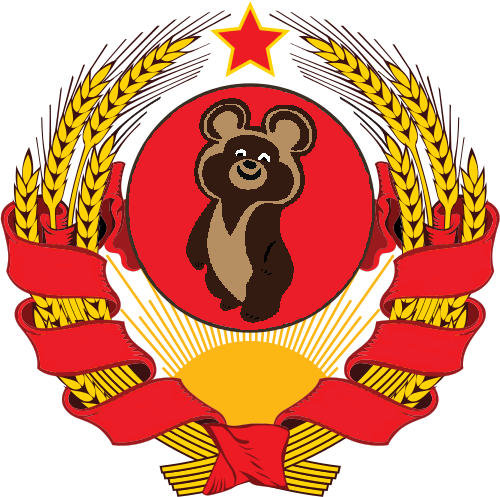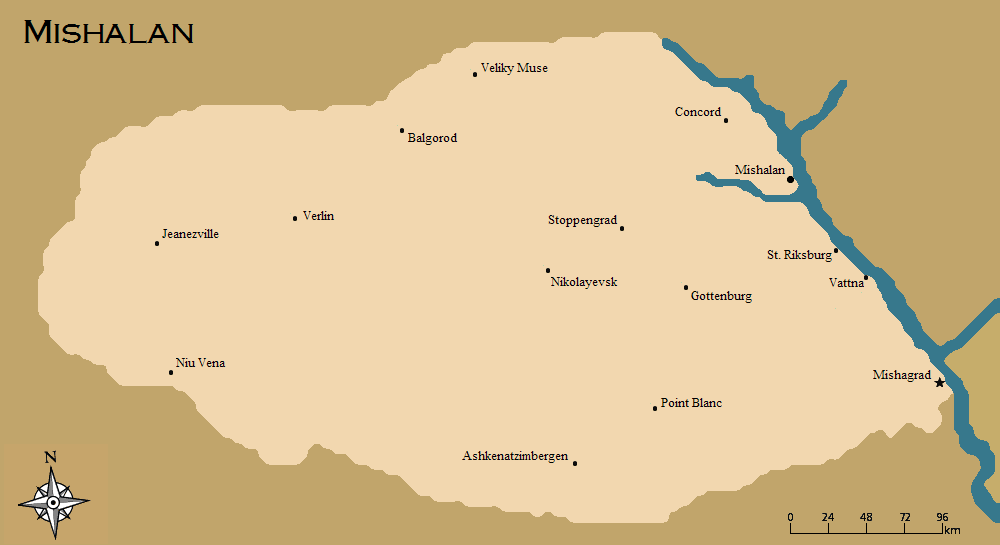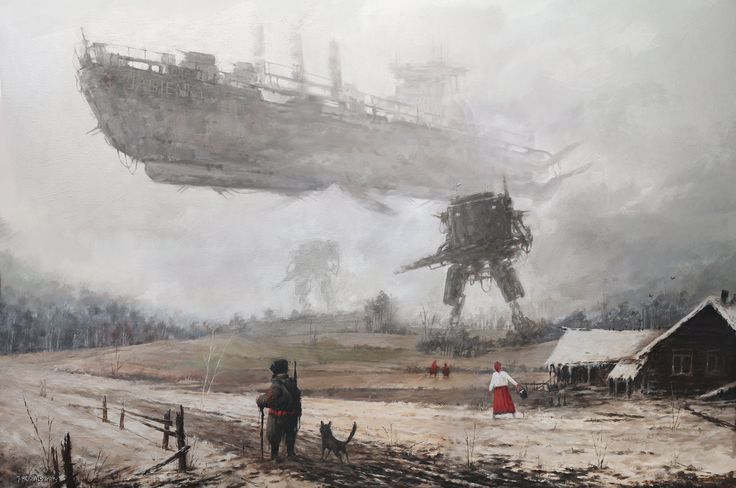Mishalan

|
|
| Feudal Status: | Imperial Dominion |
| Capital: | Mishagrad |
| Largest Cities: | Old Mishalan, Vena, Jeanezville |
|
| |
| Local Leadership Title: | Viceroy |
| Local Government: | Incorporated Organised Territory |
| Current leader: | Aleksandra Volkova |
|
| |
| Local language: | Mishalanski (Slavo-Amokolian) |
| Local Religion: | Cedrism |
Mishalan is a region in Benacia, corresponding to several former territories and tied to Amokolia for much of its long history. Its most recent form as a communist state took root around 5000 ASC. The borders of the original Mishalan once extended all the way to the northern shores of Benacia. More recently however the territory has come to encompass central Benacia and the delta of the western branch of the River Elwynn - known locally as the Concordiae Plateau - extending south into the northern part of Shireroth's former Transelwynn Territory. Mishalan was briefly occupied by Elwynn before the Froyalanish were expelled from the Imperial Republic. Subsequently a Provisional Government of Mishalan was installed to help the territory recover from the twin evils of Bolshevism and the Daemonic Vanic State.
Contents
Etymology and terminology
The name Mishalan has its origins in the local Benacian population and scholars suggest its roots originate in the Bjorngarder population to the north, which shares a similar bear-centric culture. Misha itself is a diminutive form of bear in the local language, and therefore the name Mishalan itself means "land of the bears". It is an accurate description given the long history of bear husbandry the Mishalanski exhibit and, to this day, still regularly practice.
While the name of Mishalan originally applied only to the city itself, now differentiated as Old Mishalan, modern use of the name is now applied to the overall region rather than the city.
Geography
Mishalan is located in mountainous central Benacia and is mostly at higher elevations than the surrounding countries. Even the West Elwynn is at a higher altitude due to being very close to its source in the mountains. Only south of the Concordiae Plateau does the elevation drop as one enters the Mishalan Valley and the Transelwynn. Most of the country is dominated by coniferous forest, and the timber is an important resource, both in terms of material and environmental value. Industry makes use of the mountains near Niu Vena where armaments factories require mining a great deal of steel and other metals.
History
The region now known as Mishalan has been inhabited, although not necessarily developed, since the earliest recorded times around 0 ASC. The first power to exert influence over the region was Shireroth, thus intertwining its fate with the area forevermore. Yet the western banks of the River Elwynn came under control of Machiavellia, one of the earliest powers of Benacia and an important co-founder of Tymaria. Jason Rhode, Prince of Machiavellia, became a prominent Tymarian up until the TYSOG Incident caused the collapse of that state, resulting in a domino effect that utterly crushed the Machiavellians. The region remained anarchic until the formation of Europia Concordiae, more commonly referred to as Concordia. The eponymous city of Concord was founded northwest of Old Mishalan on the Concordiae Plateau. The Concordians were the first to develop the region of Mishalan, and like later settlers were said to have originated from Hyperborea. Yet their civilization did not last long, and soon passed to invading armies from war-like Keltian state of Varja. Though the Varjans, having overextended themselves, soon lost control of the area and it devolved once again into an anarchic state that would last several centuries.
Around 2300 ASC the area came under the influence of that great conglomeration of nations known as the Confederacy of Independent States, and within that alliance under the jurisdiction of Gaia. The CIS held sway over the region until the late 2500s, but did little to develop the area, hindered in part by the environmentally-minded Gaians. After the collapse of the CIS the area once again fell into anarchy, with petty states constantly fighting and bickering. Around 2700 the Amokolians first began to appear on Lesser Automatica, though they would not begin to exercise control over Mishalan for another five-hundred years. The Amokolians would eventually begin to migrate to the Benacian mainland, settling along the river and moving southward over time. This would lead to the founding of Mishalan.
Mishalan itself was originally founded by Jess Heimer as a subdivision of Amokolia, then an independent micronation, around 3184 ASC (April 2008). Amokolia itself went through numerous different phases of government, often switching from a monarchy to a republic and back again. Originally Amokolia's Benacian territories consisted of three provinces, Oleslaad, Vattnaland, and Mishalan, but by 5021 ASC Mishalan dominated the Benacian lands and formed Greater Mishalan. This also marked the start of communist government in Mishalan and the formation of a Soviet Republic. This was mostly the result of encroachment by Elwynn, which at the same time had begun to expand into the surrounding areas vacated by Amokolia, such as Lun Ezkaron, Araxion and Iserdia. Although a conflict was averted, a Cold War persisted and the Imperial government of Shireroth was viewed with enmity, encouraging greater support for the leftist government of Mishalan. At this time Amokolia became a protectorate of Natopia, which had much more lax governmental regulation and allowed the socialist government of Mishalan to function with significant autonomy.
The area briefly passed to Shireroth around 5487 ASC, which held onto northern portions of Amokolia along the Benacian coast. The southern portion - including the core of Mishalan - then passed to a resurgent Kingdom of Amokolia, around 5567. Under the tyrant King Jean the monarchy violently suppressed the Mishalanski. This resulted in the large-scale migration of people from Mishalan into Shireroth's Transelwynn Territory. Under provisions made possible by Kaiseress Kizzy, the Mishalanski settled along the banks of the River Elwynn and founded the city of Mishagrad, forming a government-in-exile and a new district within the Transelwynn.
A resurgence of the Cabbage Plague in Amokolia and the resulting death of the tyrant King Jean in 5968 ASC, the way was paved for the Mishalanski government-in-exile to resume control of their historic homeland. This was met however with renewed hostility from Elwynn, which also sought to exert control over the vacated Amokolian lands. Although both entities were subjects of the Kaiser, who actually held power over the territory, the situation still resulted in a renewed Cold War between Mishalan and Elwynn. The matter was finally settled by treaty, allowing Mishalan full autonomy as an Imperial Dominion, with the Kaiser as titular head-of-state, while the General Secretary retains actual power as head-of-government. A caveat in the treaty stipulates that should the Soviet government collapse, control of the state would revert to Elwynn; this however only served to strengthen Soviet resistance. Since settling its disputes Mishalan (and state-owned Red Bear LLC) has become an important armaments provider for the Shirerithian military, specializing in steam-engineering and gravimetrics.
Mishalan was a left-wing communist state administered by a Soviet (council) composed of elected ministers and chaired by a General Secretary. Since Mishalan is not geographically large, the state was divided into communes centred around major cities. These communes elected a minister to sit on the Soviet, which then elects the General Secretary from among that body.
The first General Secretary of the Supreme Soviet was Vladimir Medvedev, who helped lead the Mishalanski out from the shackles of capitalism and to victory against Elwynn. After being re-elected for two successive terms, Medvedev died while still in office at the age of 102. Medvedev's death prompted new elections with several candidates lining up with backing from various groups within the communist party. Anatoly Zhukov, an extreme left-wing candidate, was killed in a border skirmish while campaigning in the south of Mishalan, which had then just been re-united with the state and was still subject to rogue mercenaries. However it was later discovered that opposing candidate Yuri Semenov, head of intelligence, had arranged Zhukov's death, leading to a crackdown on corruption and the eventual election of Nikolai Kirov, who was seen as an honest military man. Kirov's campaign of continuing Medvedev's rebuilding efforts and formulating a practical Five Year Plan have helped him to remain popular as General Secretary.
The Soviet Republic entered into a period of stagnation as the five year plan, focused on heavy industry concerns like Red Bear LLC, failed to bring about the promised classless utopia. Worse yet, Elwynn - under the rapacious King Noah - paid close attention to Mishalan's declining fortunes and chose the moment to invoke the Treaty of Two Bears in 1650. Noah, through ceaseless lobbying, prevailed upon Steward Kyle Kilynn, to declare the Soviet government deposed and Mishalan appended to Elwynn as a principality on the 24th of Filadinu that year.
The response, domestically and internationally, was one of outrage. Questions were asked in the Landsraad. The Froyalanish however lost no time in gathering up their spoils and descended upon Mishalan in their droves, spearheaded by fanatic units of the Vanic Temple Guard and the Fleurinots, urged on by the frenzied priestesses of their religion, who saw in every forest clearing, every babbling brook, and every pile of stones, sites of sacred majesty and power that had been theirs since time out of memory to womankind, the natives had just been too stupid to realise this undeniable fact.
A significant crackdown inside Mishalan itself followed. 14,312 members of the Mishalanese Communist Party nomenklatura were detained in the year 1650 under the Organisation of the Union Act 1640 (Chapter 4, Section 6: Additional Powers) for activities "contrary to the values of Societal Harmony and the pluralism and liberty that is the common right of all mankind and the best reflection of the Grace of the Divinity of the Lady Elwynn Herself".
This action, along with concurrent events, helped tip the Benacian continent once more over into chaos. By 8.VI.1651 the Landsraad had voted 11 to 3 to veto Imperial Decree 940 and on 11.VI.1651 the Steward, by this time Daniyal Dravot, issued Imperial Decree 957 to implement the veto as an administrative action, ahead of efforts by the King of Elwynn to frustrate the will of the Landsraad before the Imperial Judex. Immediately prior to issuing the decree Dravot also took advantage of his position as Justice of the Star Chamber in Elwynn to approve the transfer of Aleksandra Volkova, one of the more moderate members of the Supreme Soviet, from the notorious Dragonsfold prison into the custody of agents of the Chamber of the Crypteia bearing the seal of the Steward (himself), citing National Security for overriding state jurisdictional primacy. Once in Imperial custody Volkova found herself released and suddenly installed as Chairwoman of a Provisional Government for Mishalan.
The King of Elwynn continued to appeal to the sanctity of his constitutional position as the ruler of an Imperial State. With the connivance of his sister, the Praetor, he sought to frustrate the Landsraad and the Steward by orchestrating a choreographed defeat of the veto by having the Praetor refuse to defend the actions of the Landsraad before the Judex, quoting res ipsa loquitur and supporting her brother's claim that from the very instance that the Elwynnese Union enacted legislation on Mishalan after the issuance of Decree 940 it had passed into the exclusive jurisdiction of Elwynn. It was however too little too late and facts on the ground, both in Mishalan and in Elwynn itself were to rapidly slip beyond the control of the Froyalanish monarchy.
While the Shirerithian government prepared to enforce Mishalan's de-annexation by seizing control of the usual state organs, those exiles who had fled southwest to Kalgachia became acutely conscious that the bulk of Froyalano-Storish power was exerted through legislation and religious practice rather than any executive action, and the recapture of Mishalan's administrative organs would not be enough to reverse the attempted Froyalanisation of the territory. The restoration of native rule would in Mishalan only by effective, they held, if every trace of the alien Froyalanish culture and society was eradicated from their homeland and a vigilant defence against its return was established. The government of Kalgachia, having previously worked in the service of Minarboria and retaining that empire's alarm at the rapacious territorial claims of the Froyalanish in Amokolia, resolved to do all it possibly could to assist the Mishalanski exiles in reclaiming the soul of their motherland. The exiles were duly trained in partisan warfare by Kalgachi special forces at secret camps in the Eastern Kalgachi hills. Permission was obtained from the Shirerithian government for these exiles, now named the Konkordskaya Bratva in honour of the ancient Mishalanski capital, to return to their homeland and take all necessary measures to reverse the Froyalanish invasion. The Bratva quickly gained fame throughout Shireroth for their tactic of hunting down the fleeing or hiding Froyalanish using bears which were trained to distinguish their scent - said to be a unique combination of stale mead and tumescent genital seepage. The bears, for their part, proved difficult to control once they had located their prey and such encounters invariably ended in a frenzy of dismemberment quite regardless of their handlers' moderation.
The swift ouster of the Froyalanish from Mishalan did much to disprove the invincibility of the House of Ettlingar Freyu, the royal family through whom Froyalanish dominion had been established over much of Benacia. This emboldened the Imperial Advisory Council of Shireroth and the long-suffering Elwynnese diaspora who had been sidelined by the Froyalanish - in a rapid series of coordinated actions, which they subsequently named the Auspicious Occasion, they declared King Noah and the upper tier of the Froyalanish ruling class to be manifestations of an all-powerful daemon known as the Harald Entity, effectively stripping them of their offices and annulling their citizenship rights which denied them all protection under Shirerithian law. All legal manoeuvring aside, the popular appetite in Shireroth to see Noah deposed paved the way for the rapid takeover of the Elwynnese government by its returning diaspora and the frenzied purgation of all Froyalanic particularism from the Imperial government of Shireroth itself. Following Mishalan's lead, arrangements were made for the mass deportation of Elwynn's Froyalanish population to a specially-designated reserve in the remote wastes of western Benacia, ostensibly for their own protection.
Government
As an Imperial Dominion, Mishalan is incorporated into the Imperial Republic and is subordinated directly to the Golden Mango Throne, without the autonomy enjoyed by an Imperial State. As a directly administered territory, the Kaiser's rule in Mishalan is carried out by his appointed plenipotentiary - the Viceroy. In the case of Mishalan, this Viceroy is Lady Aleksandra Volkova, a former member of the Supreme Soviet released from Elwynnese custody after the Auspicious Occasion. The Viceroy is supported by a Lieutenant, an individual appointed as Permanent Representative of the Golden Mango Throne to the jurisdiction who is responsible for upholding Imperial interests and ensuring the proper implementation of Imperial Law and policies.
In the absence of an organic law, Mishalan is governed entirely in accordance with the main corpus of Imperial Law, supplemented by the edicts and ordinances of the Viceroy.
Mishalan is treated, for administrative purposes, as a single census division. The historic communes are Mishagrad, Old Mishalan, Vena, Jeanezville, Concord, and St. Riksburg.
State Security Force
Mishalan is entitled and obligated to maintain a 6,000 strong militia to render support and aid to the civil power.
Demographics
In 6118 ASC a visiting survey team from the Ministry of Military Affairs (MoMA) estimated the population to be some 16,278,913 strong. The Soviet Administration has yet to verify these figures.
| Ethnic Group | Population |
|---|---|
| Mishalanski | 9,498,700 |
| Amokolian | 2,878,696 |
| Elw | 1,975,944 |
| Ashkenatzim | 983,700 |
| Tellian | 941,873 |
The census in 1656 recorded the following data of the population:
| Citizens | Denizens | Loyal Subjects | Community Servitors | Total |
|---|---|---|---|---|
| 173,524 | 17,000,111 | 2,171,746 | 3,194,108 | 22,539,489 |
Major cities (not counting communes) include: Askenatzimbergen, Balgorod, Gottenburg, Nikolayevsk, Point Blanc, Stoppengrad, Velike Muzy, Verlin and Vodopád.
Culture
When Amokolia first exerted control over its Benacian territories they laid claim to a long portion of the northern coast that was once a part of Bjorngard, a territory populated by Cimmerians and Raikothians. Bjorngard was founded as a vanguard of the Hyperboreans when they first made expeditions into the Benacian wilderness many centuries ago. These virile warriors were faced with dense coniferous forests populated by hostile natives. Establishing a foothold was an extremely difficult task, and required innovation on the part of the pioneers. Thus it came as little surprise that they came to utilize the tools on hand; this being a prolific population of bears. Finding them trainable, the settlers embarked upon a unique form of animal husbandry, training the bears as beasts of burden, mounts, and military companions. With little other native fauna capable of serving the tasks put to the hardy bears, they became significantly interdependent. Over time the bears took on symbolic importance and eventually led to the area being known as Bjorngard (Bear Guard).
When the Amokolians came, the remnants of Bjorngarder culture were adopted by the Mishalanski. While the Bjorngarders emphasized a relationship with polar bears, the Mishalanski, who settled further south, adopted the Benacian brown bear (Ursus arctos arctos) as their totem animal. It was the Mishalanski that perfected the art of bear cavalry and of utilizing bears in battle, however it wasn't until the communist regime took power that the bear became a national symbol. Most commonly the Benacian brown bear is represented by the diminutive caricature of Misha, the national personification of the Mishalanski (e.g. like Columbia serves as the personification of the United States). To this day, pet bears are a common sight in most Mishalanski homes.
Economy
Located in the central highlands of Benacia, Mishalan has access to significant quantities of mineral ore. The mining industry has in turn helped to provide Mishalan with a large industrial base for producing iron, steel, and other metals. Closer to the River Elwynn, the waterway itself provides power and transportation. The banks of the river are also extremely fertile, and the Mishalan Valley is well known for its many farms - indeed, it is often called the Breadbasket of Mishalan.
As a collectivized state, all production is considered a public asset, and produced goods are redistributed equally to all Mishalanski. Excess goods are then either placed in storage for emergencies, or exported for profits that can be used to purchase goods that cannot be produced locally.
Former armed forces
The Armed Forces of the Soviet Republic was the official title given to Mishalan's defense forces. It is also unofficially called the Red Army. The Red Army is noted for making heavy use of bear cavalry, at least prior to the use of mechanized units. Bolstered by local defense industry giant Red Bear LLC, the armed forces has developed from early industrial level technology to mechanized robotics within a very short period, creating something of a clash of cultures but nonetheless effecting a deadly military. All able-bodied citizens are required to serve a two-year tour in one branch of the armed forces, and once discharged are placed on a reserve list until the age of thirty. This has allowed Mishalan to significantly bolster its armed forces to staggering numbers - an advantage that has helped to steer would-be invaders away from the country. While rather primitive in design, many of the new mechanized units, often powered by steam or coal and run by clockwork gearing, are much more efficient in battle than traditional mounted units. Even so, the use of bear cavalry has become such an important tradition, and often intimidating towards enemies, that a large contingent of riders still remain in active duty.
The development of industrialization and steam power, fuelled by the innovation and hard work of the Soviet, has led to breakthrough technologies. This new science has allowed the state armament manufacturer - Read Bear LLC - to produce advanced weapons in defence of the motherland. The most intimidating of these defences has been the creation of the flying armada, a series of airships modelled in concept after traditional ocean ships and utilising gravity inversion rigs to attain levitation. The development of clockwork robotics has also allowed for the construction of mechanised infantry, more commonly called mechs, which are mechanical suits piloted by soldiers and often armed with an array of weapons, such as heavy cannon or a Gatling gun. These developments have given the Red Army a reputation on the battlefield as an advanced and powerful military, despite its diminutive size.
Order of Battle
Armed Forces of the Soviet Republic
- Soviet Army (Red Army)
- 3rd Army
- 4th Rifle Corps
- 27th Rifle Division
- 50th Rifle Division
- 150th Rifle Division
- 16th Rifle Corps
- 2nd Rifle Division
- 100th Rifle Division
- 6th Armoured-Walker Corps
- 4th Light Walker Division
- 6th Light Walker Division
- 11th Light Walker Division
- 4th Rifle Corps
- 11th Army
- Bear-Cavalry Shock Group
- 17th Shock Division
- Bear-Cavalry Shock Group
- Attached to Limitanei (Frontier) Army
- 1st Armoured-Walker Corps
- 3rd Army
- Soviet Air Force (Workers' and Peasants' Red Air Fleet)
- 4th Aviation Army
- 18th Levship Corps
- 22nd Dreadnought Division
- 18th Levship Corps
- 4th Aviation Army
- Soviet Riverine Forces (Red Banner Fleet)




